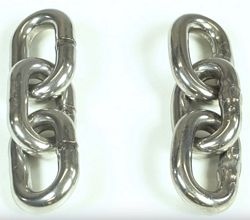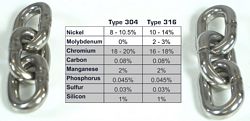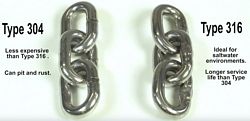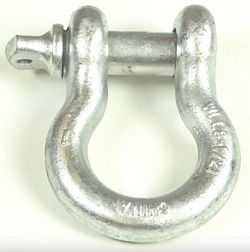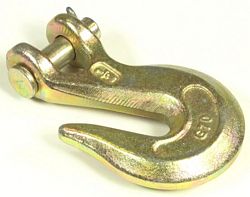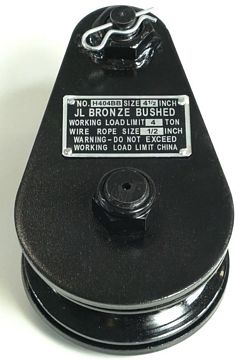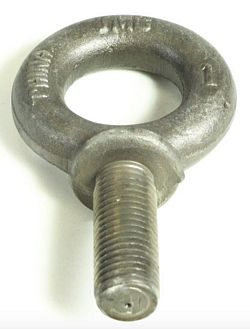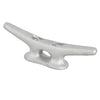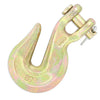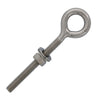Rigging Products are often subjected to conditions where corrosion may be a factor. Check out our video for an overview of the materials and finishes that are most often used in the manufacturing of rigging fittings, cable, and chain.
If you would prefer a text and picture version of this information, keep reading.
Stainless Steel
offers more corrosion protection and has a superior finish.Carbon Steel
offers more strength and a lower cost.Stainless steel products are best suited for outdoor applications, where the best possible protection from the elements is needed.
Type 304 and Type 316 Stainless Steel
Type 304
is the stronger out of the two, but it can pit and rust in corrosive and saltwater environments.Type 316
is recommended for corrosive and saltwater environments for greatest service life.Carbon Steel Products are made from several different alloys of steel and chosen for their physical properties to match the application. When produced, they are unfinished and subject to rusting.
To combat corrosion, these products are Hot Dipped Galvanized, Zinc Plated, Yellow Zinc Chromate Plated, Painted, or Self Colored (Coated with a Rust Inhibiting Oil).
Hot dip galvanizing is the process of dipping formed steel into a bath of molten zinc, which forms a thick, chemically bonded layer of zinc on top of the steel.
Our hot dipped galvanized components come in at a lower cost than stainless steel components.
These products can be used in outdoor applications but are not as corrosion resistant as stainless steel.
The process of zinc plating involves running a steel component through an electrically charged bath. A thin layer of zinc bonds to the component forming the protective coating.
It provides decent corrosion protection, a nice, even finish, and a lower cost than hot dipped galvanized products.
Zinc plated products can be used outdoors but will exhibit signs of rust much sooner than hot dipped galvanized products.
The coating process of the products is like zinc plating, but yellow chromate is added to the zinc for tinting purposes.
Products with this type of coating are primarily used in applications where they will not be exposed to corrosive elements such as salt water, salt air, rain, or snow.
This finish is often used to distinguish Grade 70 Transport chain and fittings.
Our painted steel products are an excellent choice when your application requires components with a more aesthetically pleasing look, while still having protective characteristics.
Painted Steel products are just as corrosion resistant as metallic type coatings, as long as the paint is not scratched or rubbed off, allowing for the possibility of corrosion or rust to form on the bare metal underneath the paint.
Some products are coated in a simple enamel type coating. Lever and chain hoists components are powder coated.
Our self-colored steel products are named so because there is no zinc or paint to protect it. These parts are blast cleaned after they are produced and a rust inhibiting oil is applied.
These products are a great cost-effective alternative to metallic type coatings.
We hope this information has cleared up any questions or concerns you might have about the materials and finishes available on some of our rigging products.



